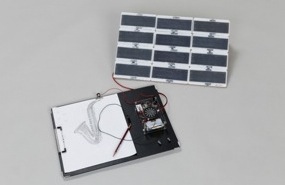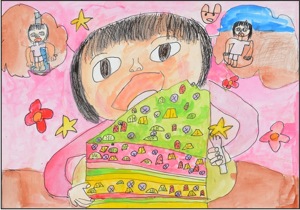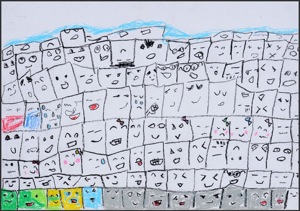World Intellectual Property Day – April 26, 2013
April 25, 2013
Creativity: the next generation
Human beings have been thinking of and imagining the future for generations. Not only science fiction (sci-fi) writers, but also other kinds of novelists, filmmakers and artists have been able to use their craft to depict a vision of the future.
In the American sci-fi TV and movie series called Star Trek, which began in 1966 but was set around the 23rd century, some of the characters used a “Communicator” device, which resembles modern cell phones, that was considered (in the 1960s) to be an invention of the distant future. However, less than a decade later, hand-held cell phones were realized and soon followed by smart phones.
At the turn of the 20th century, people projected 100 years ahead and imagined what the future would look like in the year 2000.
French artist Jean-Marc Côté’s drawings of the technologies he thought would be available in the year 2000 can be seen on the Internet. Some of them, such as video-phones, have actually been developed while others, like personal flying machines and automatic studying devices, have yet to be realized.
Research efforts to make imagination real have been, and are being, made around the globe. Often, such technological and creative efforts will result in registrations for patents, trademarks, or designs for the creator or inventor. In other creative cases, including novels, music, and movies, copyrights would apply.
The continued growth of international intellectual property activities is a reminder that imagination is being realized all around us. Data released last March by WIPO shows growth in international applications for patents, trademarks and designs. In 2012, Japan was the second biggest filer of international patents and ranked first for an increased ratio in international trademarks applications. I believe researchers, and other creators and artists, are exploring their imagination and creating for the future.
One of the biggest engines for our creative future would be children, as they will play a leading role in the next generation.

(Photo Credit: JIII)

(Photo Credit: JIII)
The Concours of Schoolchildren's Inventions, organized by the Japan Institute of Invention and Innovation (JIII), is an annual event that exhibits numerous inventions by imaginative children. Now in its 71st year, the event attracted plenty of inventions from all over Japan. Along with the Imperial Prize and the Prime Minister’s prize, the competition also presents a WIPO prize. The 2013 WIPO Prize Winner is Yasuaki Tsuruoka, from Ichinomiya Junior High School in Chiba prefecture, who invented the “Playing Pencil”.
Presently, there is another competition – “ The Dreams of Science of the Future Painting Exhibition” – featuring “drawings of the future”. Now in its 35th year, the competition has attracted a number of entries by kindergarten, elementary school, and junior high school participants. A prize by the Minister of the Ministry of Education, Culture, Sports, Science and Technology was awarded to Nao Matake, from Takiro Elementary School in Tajimi city. She drew a cake which cures diseases. This cake heals illness with each bite. It would indeed be wonderful if such a magical cake were available.

(Photo Credit: JIII)
Another winner for the prize by the Minister of Economy, Trade and Industry was Taisei Maruyama, from Toyoshina Higashi Elementary School, Azumino city. He drew " bricks which multiply by themselves when exposed to water".These outstanding self-replicating bricks would protect against a tsunami. It is hoped that such bricks will be realized someday soon.
Outside of Japan, the International Exhibition for Young Inventors will be held in May in Malaysia. Winners from Japan have the opportunity to spread their wings around the world at events such as this.
Last year, young inventors who are expected to take key roles in the future kindly made a courtesy visit to the WIPO Japan Office, before their departure to last year’s international exhibition in Thailand. Their eyes were bright enough to illuminate the future of the earth. We look forward to seeing new young inventors again this year.